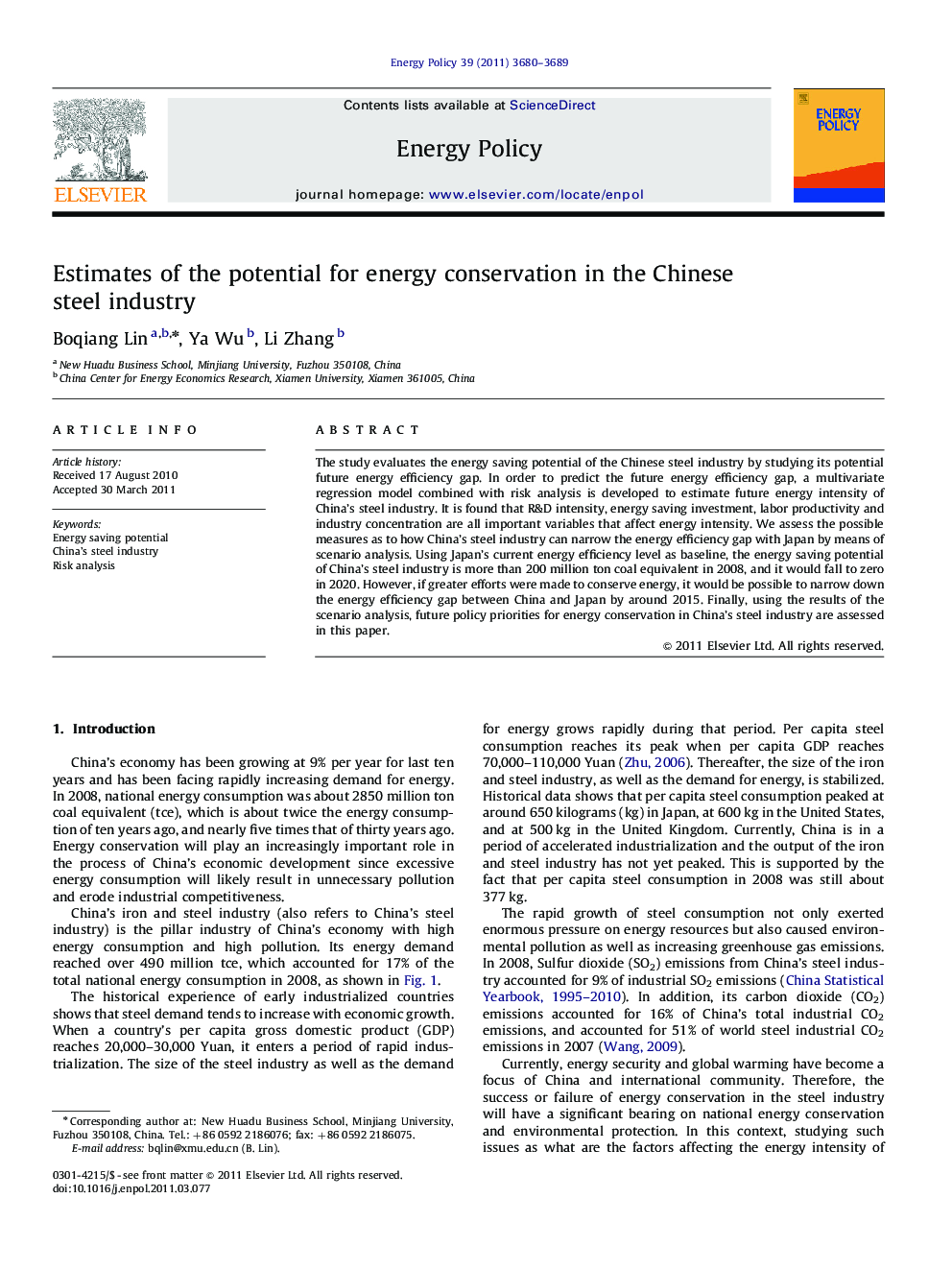| Article ID | Journal | Published Year | Pages | File Type |
|---|---|---|---|---|
| 994952 | Energy Policy | 2011 | 10 Pages |
The study evaluates the energy saving potential of the Chinese steel industry by studying its potential future energy efficiency gap. In order to predict the future energy efficiency gap, a multivariate regression model combined with risk analysis is developed to estimate future energy intensity of China's steel industry. It is found that R&D intensity, energy saving investment, labor productivity and industry concentration are all important variables that affect energy intensity. We assess the possible measures as to how China's steel industry can narrow the energy efficiency gap with Japan by means of scenario analysis. Using Japan's current energy efficiency level as baseline, the energy saving potential of China's steel industry is more than 200 million ton coal equivalent in 2008, and it would fall to zero in 2020. However, if greater efforts were made to conserve energy, it would be possible to narrow down the energy efficiency gap between China and Japan by around 2015. Finally, using the results of the scenario analysis, future policy priorities for energy conservation in China's steel industry are assessed in this paper.
► The energy saving potential of the Chinese steel industry is evaluated. ► A multivariate regression model combined with risk analysis is developed. ► R&D, energy saving investment, labor, and structure affect energy intensity.► The energy saving potential of China's steel industry would fall to zero in 2020.► Future policy for energy conservation in China's steel industry are assessed.
